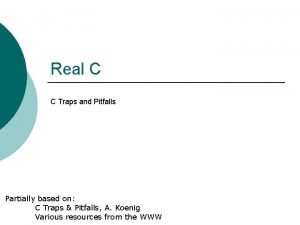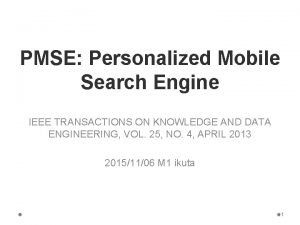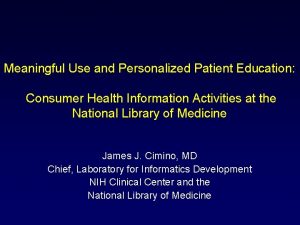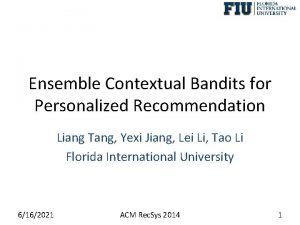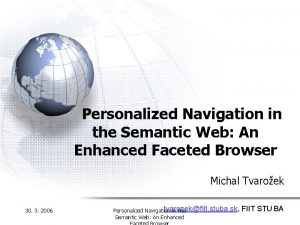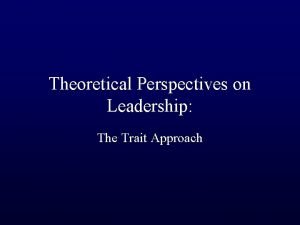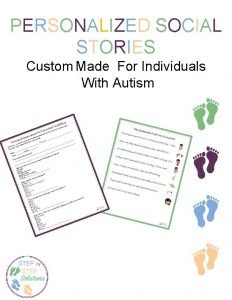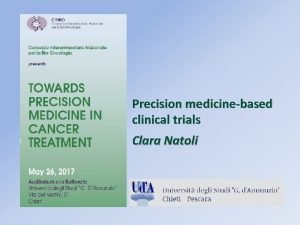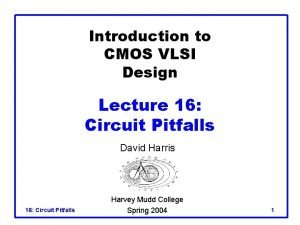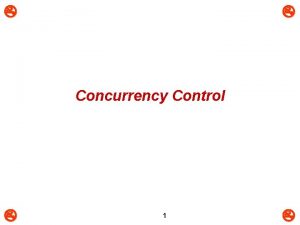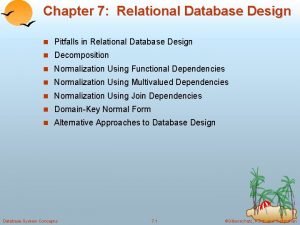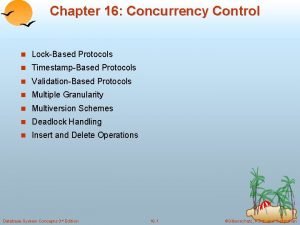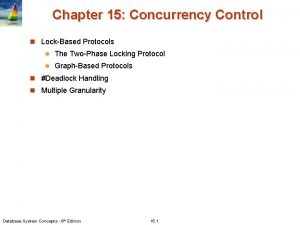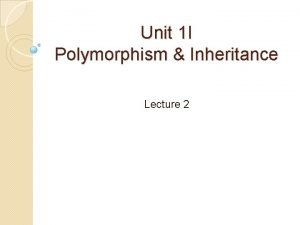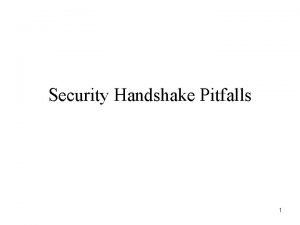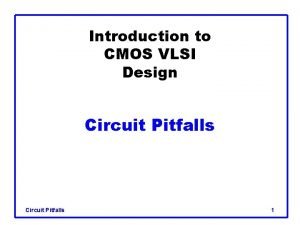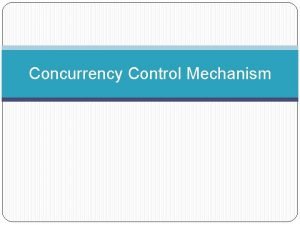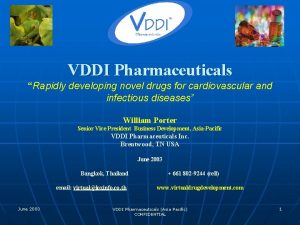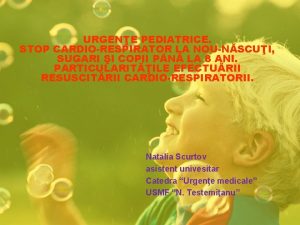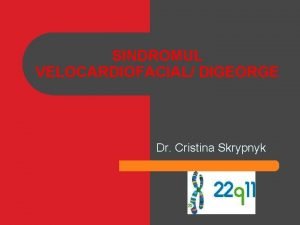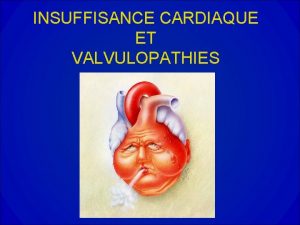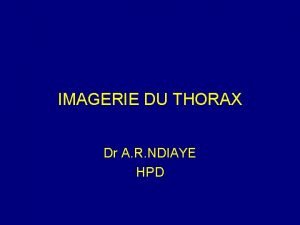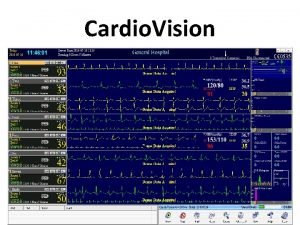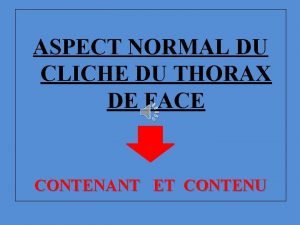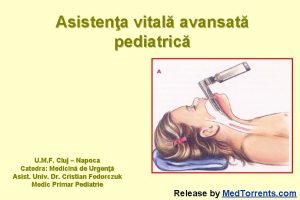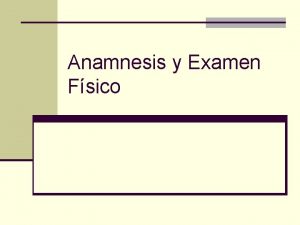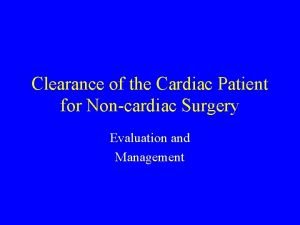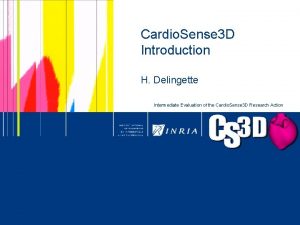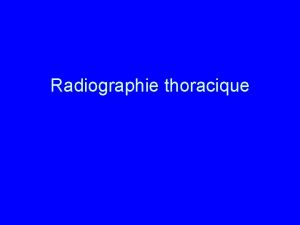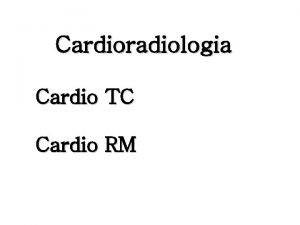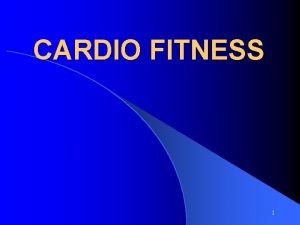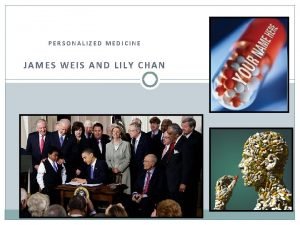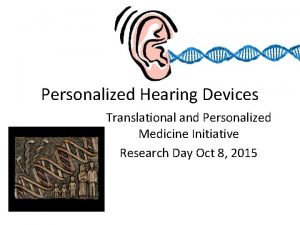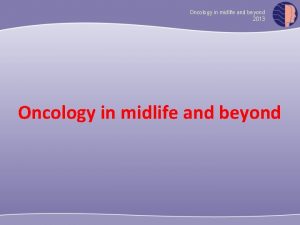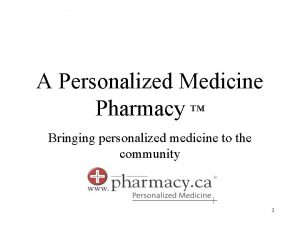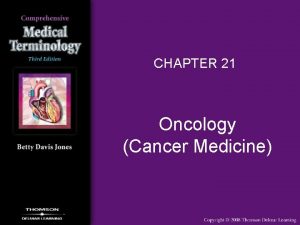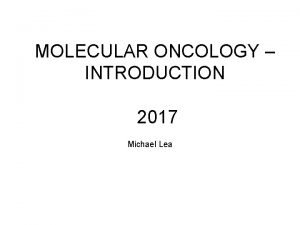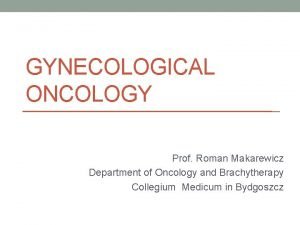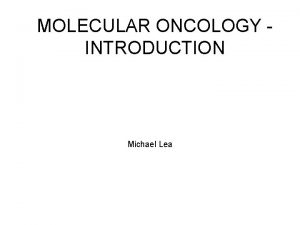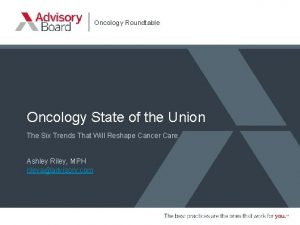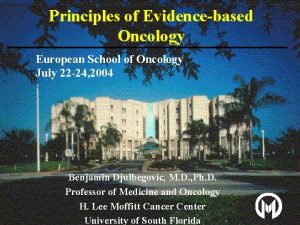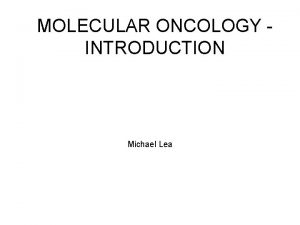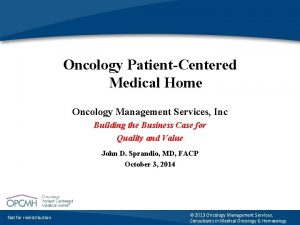Cardio Oncology The Promise and Pitfalls of Personalized
















































- Slides: 48

Cardio. Oncology: The Promise and Pitfalls of Personalized Medicine Vijay U. Rao, MD, Ph. D, FACC, FASE, FHFSA Franciscan Physician Network Indiana Heart Physicians Director, Franciscan Health Inpatient Heart Failure and Cardio. Oncology Clinic, Co-Director Anti-coagulation Clinic

Presenter Disclosure Information Cardio. Oncology: The Promise and Pitfalls of Personalized Medicine Vijay Rao, MD, Ph. D, FACC, FASE, FHFSA �No relevant disclosures related to this talk �I will not discuss off label or investigational use in my presentation.

Why a new subspecialty of Cardiovascular Medicine? “This exciting new field spans broad areas of cardiovascular medicine, from basic mechanisms of cardiovascular toxicities, translation and risk stratification using cardiovascular imaging and biomarkers, to clinical strategies aimed at prevention and treatment of cardiovascular disease in patients undergoing cancer treatments and cancer survivors. Rapidly growing market of novel and emerging cancer therapies and rising number of patients living with and surviving cancer, often in the setting of new or pre-existing cardiovascular disease and risk factors, have created a need for specialty cardiovascular care. ” Anna Barac, MD, Ph. D, Section Lead ACC

2015 CDC US Mortality Data # of Deaths Heart Disease Cancer Causes of Death Chronic Lower Respiratory Diseases Accidents Stroke Alzheimer's Disease Diabetes Influenza and Pneumonia Kidney Disease Suicide 0 100, 000200, 000300, 000400, 000500, 000600, 000700, 000 # of Deaths


Outline �Cardio. Oncology: Historical perspective ◦ Anthracyclines ◦ Radiation therapy �Molecular Targeted Therapies (Precision Medicine) ◦ Trastuzumab (Herceptin®) ◦ Tyrosine Kinase Inhibitors (TKIs) ◦ Immune Checkpoint Inhibitors (ICIs) �Franciscan Cardio. Oncology Clinic �New Frontier: exercise/rehab for cancer patients

Anthracyclines � In the 1950 s, daunorubicin, a compound isolated from the soil bacterium Streptomyces peucetius, was found effective against tumors in mice, and eventually, acute leukemia and lymphoma. � Among the most effective anticancer treatments ever developed and are effective against more types of cancer than any other class of chemotherapeutic agents � MOA: intercalates between DNA/RNA, affects topoisomerase II, free radial generation - Associated with troubling side-effect: cardiotoxicity (in some cases: irreversible), many of whom went to require heart transplant

Anthracycline Dose Cardiac Toxicity Shan et al. Ann Intern Med. 1996; 125(1): 47 -58.

Berry GJ, Jorden M. Pediatr Blood & Vancer 2005: 44: 630 -7

Ewer MS and Ewer SM. Nat. Rev. Cardiol. 2010; 7, 564– 75

Jensen BV et al. Ann Oncol 2002 13: 699 -

Cardinale D et al. JACC 2010, 55: 213 -20

Cardinale D et al. JACC 2010, 55: 213 -20

Cardio. Oncology Mission “One of the goals of cardio-oncology is to prevent the cancer survivor of today from becoming the heart failure patient of tomorrow. ”

Radiation Therapy and CV disease �XRT: curative vs palliative intent �Mantle Cell Lymphoma, Adjuvant therapy in breast cancer, Hodgkin’s lymphoma, lung cancer �Cardiac complications when dose is greater than 30 Gy �Shrinking problem: breath holding technique, shielding, smaller fractions, PET scans

Incidental exposure of the heart to radiotherapy for breast cancer increased the rate of major coronary events by 7. 4% per gray, with no apparent threshold. The percentage increase per unit increase in the mean dose of radiation to the heart was similar for women with and women without preexisting cardiac risk factors

Radiation Induced Cardiotoxicity

ASE – ESC Expert Consensus 2014









Murphy CG and Morris PG. Anti-Cancer Drugs 2012, 23: 765– 76


Ewer MS et al. J Clin Oncol 2005; 23: 7820 -6

Echocardiography

Myocardial strain analysis • 10 -15% drop in GLS by STE predicts future drop in EF for both anthracycline and trastuzumab chemotherapy [Thavendiranathan et al JACC 2014 volume (63): 2751]

Cardiac MRI

Angiogenesis Inhibitors: HTN � Drugs: Sorafenib (VEGFR, PDGFR and Raf family kinases), Bevacizumab (VEGFR), Sunitinib (VEGFR, PDGFR) ◦ Metastatic renal cell cancer, ovarian cancer, metastatic colorectal cancer Prevalence: 15 -60% develop HTN (link between HTN and improved progression free survival) � Risk Factors: Hx of HTN, >1 combo therapy, >65 yo, smoking, HL � Treatment: Ace-Inhibitors and/or dihydropyridine calcium channel blockers; avoid inhibitors of CYP 3 A 4 (diltiazem, verapamil) as TKIs are substrates, could consider nevibolol (Bystolic) (beta-blocker which increases NO bioavailability); Franciscan grant written to test this � ◦ May need to decrease dose or halt therapy until HTN controlled; HTN resolves once agent stopped

VEGF Inhibition links to CV disease Toyez et al. JASH, June 2018: Volume 12, Issue 6, Pages 409– 425

Franciscan Health: Cardio. Oncology Clinic 8 Oncologists, 4 Cardiologists, 2 nurse navigators (oral agents/iv agents), one dedicated MA, dedicated clinic ½ day every two weeks � Prevention/screening for cardiotoxicity and CV complications of cancer therapy � Increase awareness about topic and clinical considerations among PCPs, cardiologists, and the health care team (ex physiologists) � Increase access to subspecialty expertise (telemedicine initiative with Franciscan outreach) � Contribute to research in the field ◦ Incorporating CRS (cardiotoxicity risk score) in cardio-onc setting (chemotherapy risk + patient CV risk factors), embedded in EMR for cancer patient intake; guide for referrals to clinic ◦ TKI-HTN grant; nebivolol (Dr. Chugh) ◦ SURVIVE registry (Dan Lenihan at Wash U; 10 sites �


Fig. 1 Percentage of total cardiovascular deaths versus breast cancer deaths by age of ductal carcinoma in situ (DCIS) diagnosis Berkman et al. Breast Cancer Research and Treatment 2014 DOI: 10. 1007/s 10549 -014 -3168 -3

Case-control study of heart rate abnormalities across the breast cancer survivorship continuum Groarke JD, et al. Cancer Med. 2019 Jan; 8(1): 447 -454. doi: 10. 1002/cam 4. 1916. Epub 2018 Dec 21

Personalized Exercise Therapy in Cancer � What we know: Exercise therapy improves a patient’s CVD risk profile ◦ favorable alterations in insulin sensitivity, lipid profile, and blood pressure with concomitant improvements in the reserve capacity of the skeletal muscle/vasculature/cardiovascular axis � Across 26 studies of breast, colorectal, and prostate cancer patients, a 37% reduction was seen in risk of cancer-specific mortality, comparing the most versus the least active patients (pooled relative risk = 0. 63; 95% confidence interval: 0. 540. 73) (Friedenriech CM et al. Clin Cancer Res. 2016 Oct 1; 22(19): 4766 -4775. Epub 2016 Jul 12)

Individualization � Exercise exposure (≥ 9 metabolic equivalents of task hours of physical activity per week) was associated with a substantial 50% reduction in breast cancer death in estrogen receptor (ER)–positive tumors compared with a nonsignificant 9% reduction in ER-negative tumors. JAMA. 2005; 293: 2479 -2486. ◦ The exercise prescription must be specific and targeted to the primary endpoint or system(s) or pathway(s) known or postulated to underpin the effects of exercise on the primary therapeutic target. ◦ In the context of breast cancer that are ER positive, exercise prescriptions should be designed to optimally inhibit ER activity, its ligands, or coactivating pathways. � Increasing exercise is associated with linear reductions in the risk of recurrence and cancer mortality but only up to a specific threshold; exercise exposure beyond this threshold is associated with an attenuated effect on cancer outcomes, suggesting that an upper threshold or optimal dose of exercise exists to impact cancer outcomes

Current and next generation practice in exercise oncology. Current practice (left column) stratifies patients based on tumor type, provides a generic exercise prescription (typically based on predicted maximum heart rate), resulting in a heterogeneous response. Next generation practice (right column) stratifies patients based on multiple factors, provides a targeted exercise prescription based on phenogroup, resulting in optimized efficacy, safety, and tolerability of exercise therapy. CPET, cardiorespiratory exercise test, CRF, cardiorespiratory fitness, Rx, prescription. Therapy and Cardiovascular Toxicity in Cancer Scott JM et al. Circulation. 2018 Mar 13; 137(11): 1176 -1191.

Screening/exercise prescription approaches in oncology. Three example screening/exercise prescription approaches that could be applied to research investigations designed to assess the efficacy of exercise on cardiovascular toxicity in the oncology setting: (1) guideline based approach (bottom row) applies ASCO cardiotoxicity guidelines and standard exercise guidelines; (2) ASCO guidelines and VO 2 peak-based approach (middle row) applies the addition CPET for risk stratification and exercise prescription design; (3) multidimensional data approach (top row) applies advanced analytics for both risk stratification and targeted exercise prescription design. ASCO, American Society of Clinical Oncology; CPET, cardiorespiratory exercise test.

Bench-to-Bedside Approaches for Personalized Exercise Therapy in Cancer Authors: Lee W. Jones, Ph. D, Neil D. Eves, Ph. D, and Jessica M. Scott, Ph. D ASCO Meeting Library 2017

Cardio-Oncology Rehabilitation to Manage Cardiovascular Outcomes in Cancer Patients and Survivors: A Scientific Statement From the American Heart Association. Gilchrist SC et al. Circulation. 2019 Apr 8: CIR 0000000679. doi: 10. 1161/CIR. 0000000679. [Epub ahead of print] � Cardio. Oncology Rehabilitation (CORE) � Referral is not driven by a specific point in the cancer continuum but rather by a patient’s underlying risk of cardiac dysfunction; referral can be during therapy or in the survivorship period � CORE: patient assessment, nutrition counseling, weight management, bp/lipid/DM 2 management, tobacco cessation, psychosocial and physical activity management � Highly individualized (type and duration) � CORE can be center or home based � Need research in field so can pave wave for reimbursement � Track all outcomes including economic (downstream healthcare use, ability to return to work, etc).

Vijay U. Rao Vijay. rao@franciscan alliance. org Franciscan Health Cardio-oncology Team

References � Cardiovascular Toxic Effects of Targeted Cancer Therapies Javid J. Moslehi, M. D. N Engl J Med 2016; 375: 1457 -1467 October 13, 2016 DOI: 10. 1056/NEJMra 1100265 � SCAI Expert Consensus Statement: Evaluation, Management, and Special Considerations of Cardio-Oncology Patients in the Cardiac Catheterization Laboratory Iliescu et al. Catheterization and Cardiovascular Interventions 00: 00– 00 (2015) � Expert consensus for multimodality imaging evaluation of adult patients during and after cancer therapy: a report from the American Society of Echocardiography and the European Association of Cardiovascular Imaging. Plana, J. C et al. J Am Soc Echocardiogr. 2014; 27: 911– 939

Pharmacologic Treatment for Anthracycline and Trastuzumab Cardiotoxicity �Ace-Inhibitors/Angiotensin Receptor Blockers �Beta-blockers (carvedilol, nebivolol) �Statins �Dexrazoxane

PRADA study 2 x 2 factorial design studying effects of candesartan vs metropolol succinate on change in LV function (c. MRI EF) with anthracycline chemotherapy in adjuvant setting for breast cancer with or without trastuzumab and/or radiation � 120 patients followed up to 61 weeks � Principal Findings: � The primary outcome, decline in LVEF from baseline to end of the study, was -0. 8% in the candesartan group versus -2. 6% in the placebo group (p = 0. 026 for between-group difference). Findings were the same among all tested subgroups. Metoprolol was not associated with a change in LVEF versus placebo. Findings were the same among all tested subgroups as well. � � Gulati G, Heck SL, Ree AH, et al. Eur Heart J 2016; Feb 21: [Epub ahead of print].
 C traps and pitfalls
C traps and pitfalls The perils and pitfalls of leading change case solution
The perils and pitfalls of leading change case solution Hexiangnan
Hexiangnan Personalised mobile search engine
Personalised mobile search engine Pentaho business analytics
Pentaho business analytics Personalized patient education
Personalized patient education Contextual bandits for personalized recommendation
Contextual bandits for personalized recommendation Dietmar jannach
Dietmar jannach Personalized navigation
Personalized navigation Personal statement first draft
Personal statement first draft Basic communication operations in parallel computing
Basic communication operations in parallel computing Limitations of trait theory of leadership
Limitations of trait theory of leadership Personalized social stories
Personalized social stories Personalized learning learner profile
Personalized learning learner profile Mdanderson.org
Mdanderson.org Oyunlarm
Oyunlarm Institute for personalized learning
Institute for personalized learning Circuit pitfalls in vlsi
Circuit pitfalls in vlsi What are pitfalls in differentiation
What are pitfalls in differentiation The protocol ensures freedom from deadlock.
The protocol ensures freedom from deadlock. Pitfalls dalam wawancara
Pitfalls dalam wawancara Pitfalls in relational database design with example
Pitfalls in relational database design with example Graph based locking protocol
Graph based locking protocol What are two pitfalls (problems) of lock-based protocols
What are two pitfalls (problems) of lock-based protocols Pitfalls of operator overloading in c++
Pitfalls of operator overloading in c++ Tony albrecht
Tony albrecht Security handshake pitfalls
Security handshake pitfalls Pitfalls of gauss elimination method
Pitfalls of gauss elimination method Decision making pitfalls
Decision making pitfalls The pitfalls of a differentiation strategy include
The pitfalls of a differentiation strategy include Pitfalls of prototyping
Pitfalls of prototyping Circuit pitfalls in vlsi
Circuit pitfalls in vlsi Pitfalls in selecting new ventures
Pitfalls in selecting new ventures Concurrency control mechanisms
Concurrency control mechanisms Decide model aviation
Decide model aviation Vddi pharmaceuticals
Vddi pharmaceuticals Stopul cardio respirator definitie
Stopul cardio respirator definitie Sindrom velo cardio facial
Sindrom velo cardio facial Index cardio thoracique
Index cardio thoracique Signe de la silhouette
Signe de la silhouette Horizontal fissure of left lung
Horizontal fissure of left lung Cardiovision
Cardiovision Indice cardio thoracique
Indice cardio thoracique Cauze reversibile de stop cardio-respirator
Cauze reversibile de stop cardio-respirator Ejemplo de examen fisico segmentario
Ejemplo de examen fisico segmentario Nssttc
Nssttc Cardio sense
Cardio sense Index cardiothoracique
Index cardiothoracique Prefijo exo ejemplos
Prefijo exo ejemplos
